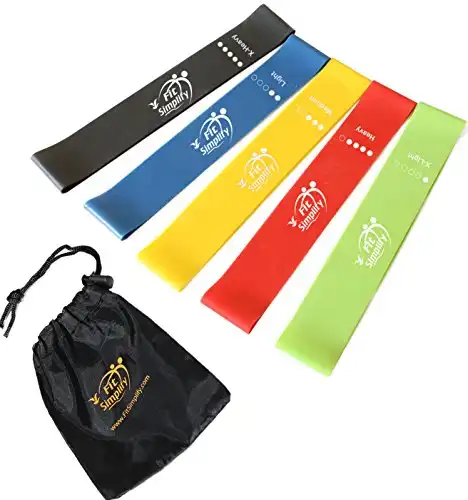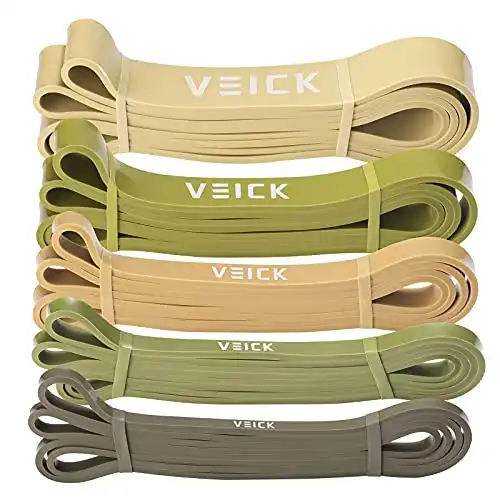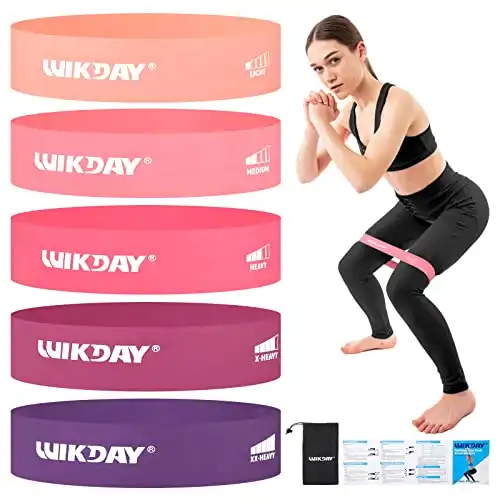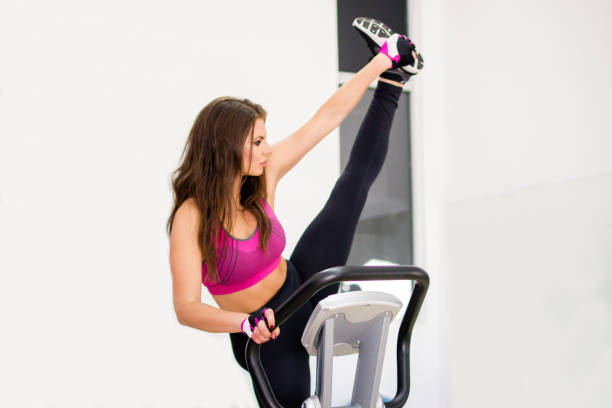
Why Resistance bands are the perfect tool for your workout routine!
Resistance bands are versatile, easy to use, can help you target specific muscle groups. The best part they are affordable and perfect for on-the-go workouts.
Do resistance bands build muscle?
According to A 2019 study by the NIH showed that training using resistance bands provides similar strength gains to using conventional gym equipment.
“Resistance bands might not look like much, but they can strengthen your muscles as effectively as more traditional weights,” says Travers. “In many ways, bands put more tension on your muscles and work them longer during movements.” In many ways, bands put more tension on your muscles and work them longer during movements.”
Do you wonder if resistance bands will actually help you build muscle?
HOW DO RESISTANCE BANDS WORK?
Resistance bands work by providing a resistance for you to push or pull against during your training. They are different from weights in that instead of being a weight that you lift, pull, or push, they create tension throughout your reps and sets. As you pull the band further, it gets tighter and harder to move throughout the movement.
CAN RESISTANCE BANDS BUILD MUSCLE?
If you are looking to start building muscles without spending long hours at the gym, resistance bands can be a really great option. Especially considering that the U.S. Department of Health and Human Services recommends that all adults do strength training exercises two times a week. You can do strength training in a number of different ways – including using resistance bands. They are an excellent option for people just starting out on the fitness journey and looking to build and tone muscles early on.
To build muscle size, you have to overload the muscle with weight or resistance. The overload creates small tears in the muscle fiber (hence the term “getting ripped”) that allow new muscle tissue to grow. Lifting weights, lifting your own body weight, and using resistance bands helps to overload your muscles and build them up. The International Journal of Sports Physical Therapy found that resistance bands were just as effective as a weight machine in activating the quadriceps during the concentric or “up” phase of a knee extension.
PROGRESSIVE OVERLOAD
The way that muscles get bigger and bigger is through a process called progressive overload. We tear the muscle fibers and the body repairs them bigger and stronger than before. As we progress, we need bigger weights or more resistance and a variety of exercises to keep growing.
The body is responsible for doing all the repairs, and it uses hormones, such as testosterone, to do a great deal of this work. But we also have to give it extra fuel, in the form of calories and protein, to make sure it has the energy to repair the muscle damage.
If you get enough resistance from the bands to contract your muscles beyond a point they have gotten used to – and you are consuming enough protein and calories, then you should be able to build muscles. Up to a point.
Practicing Progressive Overload with Resistance Bands
In order to make sure that you are building muscle and not just toning, you have to keep forcing your body to adapt to more stress or tension. Here are some ways to do so with resistance bands:
- Using higher tension bands: As mentioned earlier, resistance bands come in varying levels of resistance. Over time, it’s important to increase the resistance level so you can continue to build muscle instead of just toning your muscles.
- Increase reps: Continuously increasing the number of reps you do with resistance bands will promote muscle breakdown.
- Increase sets: In addition to increasing reps per set during your training, you should also increase the number of sets you are doing for each exercise.
Resistance Band Exercises:
1.Banded Squats: Stand on a resistance band with your feet shoulder-width apart, holding the ends of the band at shoulder height. Lower into a squat, keeping your knees over your ankles, and then push up through your heels to stand back up.

2. Resistance Band Pull-Aparts: Hold a resistance band in front of you with both hands, arms extended straight out. Keeping your arms straight, pull the band apart until your hands are at your sides, then release.

3. Banded Glute Bridge: Lie on your back with your knees bent and feet flat on the floor. Place a resistance band above your knees, then lift your hips up toward the ceiling, squeezing your glutes at the top.

4. Bicep Curls: Stand on the middle of a resistance band, holding the ends of the band in each hand with palms facing forward. Curl the band up toward your shoulders, then lower back down.

5. Seated Row: Sit on the ground with your legs straight out in front of you and the resistance band looped around your feet. Hold the ends of the band in each hand and pull the band toward your chest, squeezing your shoulder blades together, then release.

Resistance bands are so versatile, portable, joint-friendly, and cost-effective and can be used for any fitness level or goal.
Check out our favorite resistance bands below:
You May Also Enjoy:






